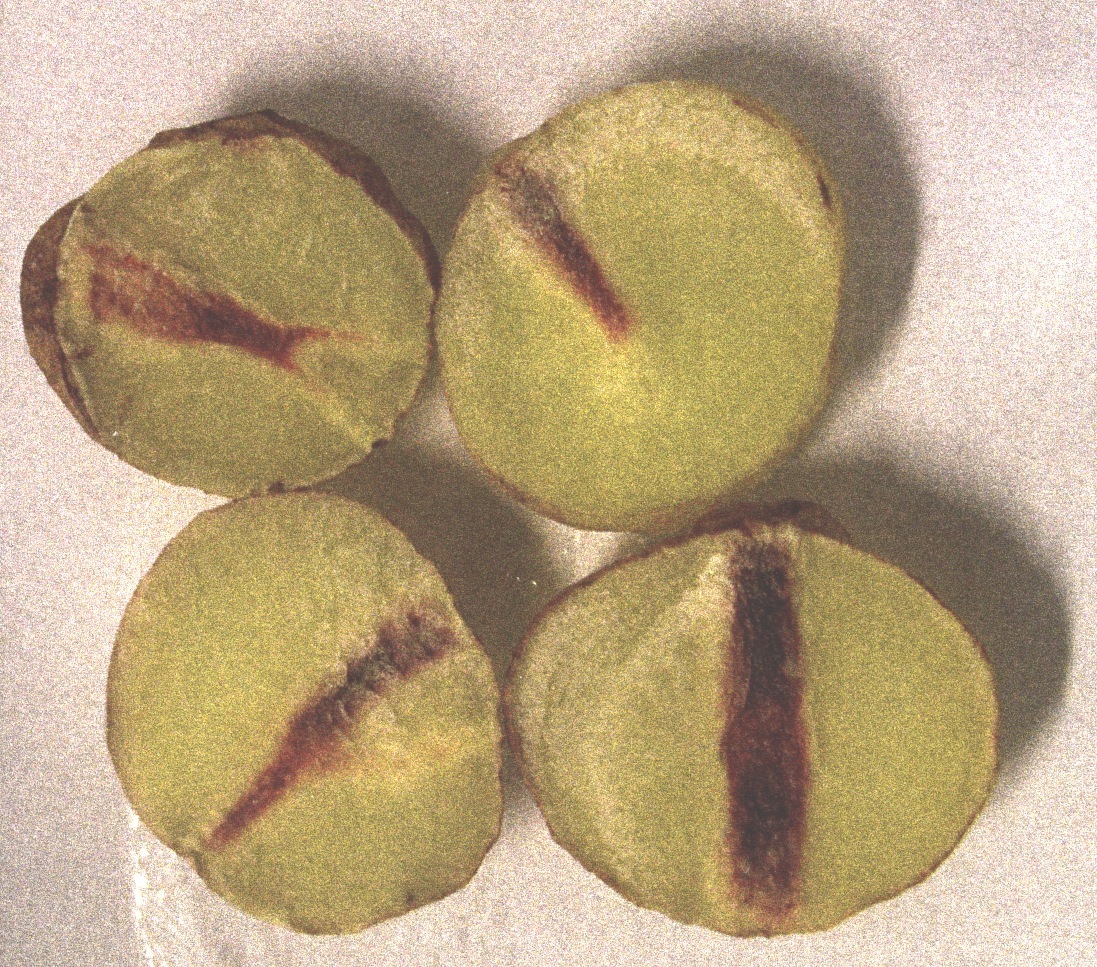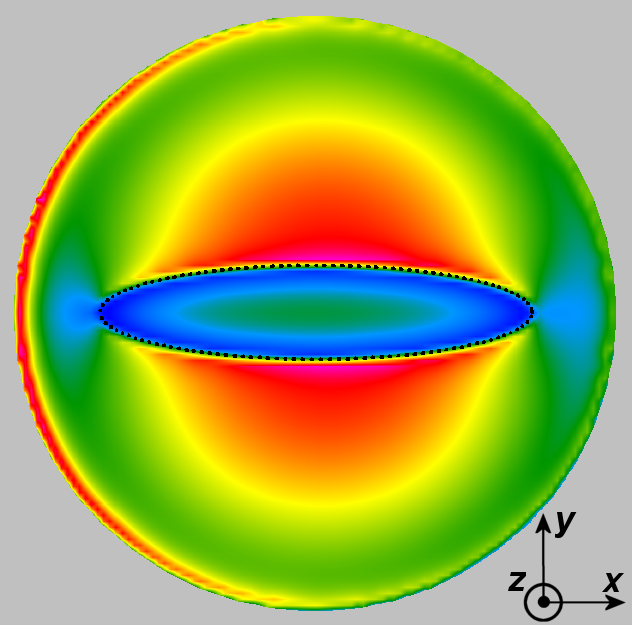Internal R&D – the burnt stripe effect
Extended material is available – AMPERE 2009 presentation on the burnt stripe effect – IMPI 2007 presentation on “puddles and droplets”.
The
so-called cold rim effect is strong for thin semidry loads
with
radii less than about 35 mm (at 2450 MHz), which thus get a centre
heating that cannot be modified much by the design of the microwave
heating system. But a particular amplification of the heating in a
typical narrow zone across the diameter in load items such as potato
chips may also occur – see the picture below to the left.


If
there would be only
drying-out by the microwave energy, this would be faster in the whole
central region. Since the permittivity then decreases and by that the
absorption capability of these dryer parts, a negative feedback would
then occur and even out the drying. But as is seen in the photo to the
left, the burnt stripe effect is indeed a runaway phenomenon,
where an already dried-out region absorbs additional power so burn
marks are created. It is
concluded that liquid water transport is necessary for the effect to
occur.
What
happens is illustrated in the numerical modelling scenario in the image
to the right. This shows a circular 24 mm diameter thin potato chip at
100 °C (permittivity ε = 50–j16
) having an elliptical inclusion with axes 18 and
4 mm, representing a partially depleted region (permittivity ε = 8–j1,6). This region is marked
with a black dotted curve. The potato chip is irradiated from the left with a free
space TM-polarised 2450 MHz wave with incidence angle θ = 82°. The
magnetic source field is thus y-directed
and the main current
x-directed;
the dominating electric field is z-directed.
The following phenomena can be distiguished:
- There
is a heating (and thus current) concentration in the high-ε part close
to the low-ε area. One can explain this as being due to the current
following the shortest path with high ε and thus "avoiding" the low-ε area. The
boundary is concave and not convex as is the case with the cold rim
effect, so conditions are now reversed.
- There is a significant heating in the centre region
of the low-ε area.
This is due to direct action by the strong external z-directed
electric field. The phenomenon is
amplified by the fact that the load is thin. It is to be noted that the
heating intensity in the centre is quite strong: almost half of the maximum in
the non-depleted area, in spite of the ε″ being ten times lower and
the penetration depth being
more than three times larger than in the non-dried region. This power
density will indeed cause overheating, in consideration of the limited amount of remaining water for evaporative cooling in this semidry region.
- There is a significant heating intensity minimum
just inside the low-ε area
boundary. This is a result of the z-directed
electric field being almost short-circuited there, by the high-ε
area nearby. One can also explain the minimum as a so-called magnetic wall
effect. The minimum intensity is less than half of that in the centre
of the low-ε area.
These
sharp heating gradients result in the boundary between the outer
relatively moist and the inner dry regions to become relatively
constant, while the inner region continues to dry out. The resulting
narrow burnt regions are clearly seen in the photo to the left.
Can
this effect of uneven heating be avoided? Load rotation or changes of
the polarisation of the TM field will not help much; the inner
overheated region will
then instead become symmetrically circular. The use of other microwave
polarisations will result in edge overheating as well as a risk of
lower microwave system efficiency. There are no easy solutions.



